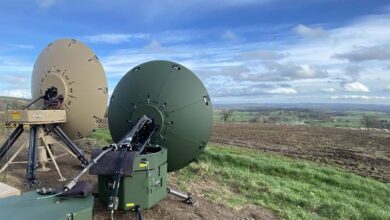Milrem Robotics has completed a weaponized unmanned ground vehicle demonstration for the US Army Expeditionary Warrior Experiment (AEWE) at Fort Moore, Georgia.
The activity focused on validating “state-of-the-art” solutions to increase warfighter lethality through 2040.
Under Milrem’s tests, the company showcased its Tracked Hybrid Modular Infantry System (THeMIS) for maneuvers and functionality in “realistic operational settings.”
Additional tasks involved engagement with the Dutch Ministry of Defence and the Netherlands Armed Forces’ Robotics and Autonomous Systems (RAS) unit to discuss other deployment concepts within combat formations.

“AEWE showcased the advanced stage of the THeMIS [unmanned ground vehicle], highlighting its operational readiness and allowing us to collect crucial user feedback on the system and concepts,” Milrem Robotics Chief Sales Officer Patrick Shepherd explained.
Throughout the event, Milrem’s proprietary autonomy technology Intelligence Functions Kits were combined with THeMIS platforms to conduct associated experiments in different environments and terrains.
“Integrated with intelligent functions, third party payloads such as weapon systems, route clearance or casualty evacuation systems, the THeMIS is now operational globally,” Shepherd added.
Unmanned Ground Vehicles in Ukraine
Alongside THeMIS’ capability for international employment, the Estonian company highlighted that the drone is now operational in Kyiv to support Ukrainian troops in defending against Russia.
In connection with this, the German government contracted Milrem and a Munich-based industry partner in 2022 to supply a THeMIS fleet for Ukraine.
A separate agreement was signed in 2023 to spearhead local manufacturing of next-generation tactical robotic systems in the country.
“Our ongoing collaboration with our Ukrainian partners involves a dynamic feedback loop,” Shepherd said.
“This process not only enhances the system’s performance swiftly but also allows us to implement and test modifications in actual combat scenarios.”











